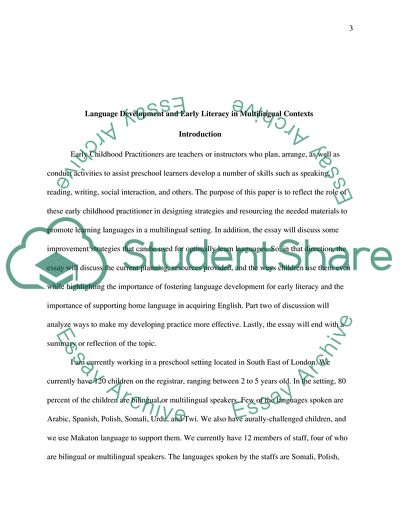Cite this document
(Early Language Development and Literacy in Multilingual Contexts Essay Example | Topics and Well Written Essays - 3750 words, n.d.)
Early Language Development and Literacy in Multilingual Contexts Essay Example | Topics and Well Written Essays - 3750 words. https://studentshare.org/education/1868074-language-development-early-literacy-in-multilingual-contexts
Early Language Development and Literacy in Multilingual Contexts Essay Example | Topics and Well Written Essays - 3750 words. https://studentshare.org/education/1868074-language-development-early-literacy-in-multilingual-contexts
(Early Language Development and Literacy in Multilingual Contexts Essay Example | Topics and Well Written Essays - 3750 Words)
Early Language Development and Literacy in Multilingual Contexts Essay Example | Topics and Well Written Essays - 3750 Words. https://studentshare.org/education/1868074-language-development-early-literacy-in-multilingual-contexts.
Early Language Development and Literacy in Multilingual Contexts Essay Example | Topics and Well Written Essays - 3750 Words. https://studentshare.org/education/1868074-language-development-early-literacy-in-multilingual-contexts.
“Early Language Development and Literacy in Multilingual Contexts Essay Example | Topics and Well Written Essays - 3750 Words”. https://studentshare.org/education/1868074-language-development-early-literacy-in-multilingual-contexts.


